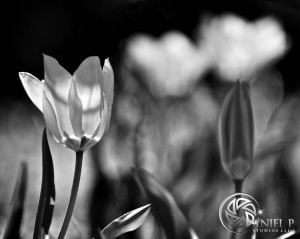Depth of Field – Taking Creative Control
Depth of Field is the range of distance within the subject that is acceptably sharp. It will vary depending upon camera type, aperture and focusing distance. The Depth of field (DOF) does not abruptly go from sharp to un-sharp however gradually transitions from sharp to un-sharp. There is no drastic point where the clarity or sharpness falls off, it is a gradual degradation in sharpness. Essentially, depth of field is focusing on one specific element in your field of view and by adjusting the aperture setting on your lens determining what else will be in focus. This is also referred to as the “circle of confusion”.
Once the circle of confusion becomes perceptible to our eyes the area is no longer in the “depth of field” and no longer sharp. In short an acceptably sharp circle of confusion would be one that in an 8 x 10 enlargement viewed from a distance of approximately 1 foot would go unnoticed. Please bear in mind that Circle of Confusion is a human imposed parameter that varies according to human perception.
Now that you are totally confused, no pun intended, let me discuss the 2 main components in determining DOF (Depth Of Field), Aperture and focal distance. Large apertures (small F-stop #’s) and close focal distances create a shallow DOF, while smaller apertures (larger F-stop #’s) create greater DOF. Depth Of Field is an optical phenomena defined as “the area in front of and behind a focused subject in which the photographer’s image appears sharp”.
So let me use this example :
A 50 mm lens focused on a subject 10 feet away at an Aperture of F/5.6 and using a circle of confusion of 0.0333 mm will have a near focus distance of 8.17 feet & a far focus point of 12.88 feet. It will have a depth of field of 4.72 feet (12.88 ft -8.17 ft = 4.72 ft. Stop down to F/16 and DOF becomes 22 ft.
So rule of thumb, DOF extends from 1/3 in front of your subject to 2/3rds behind it, you have twice as much DOF behind your focal point as you will in front of it.
So why is DOF important? Shallow depth of field lets you draw the viewer’s eye into specific parts of the image, creating a visible distance between subject and the rest of the otherwise flat, two-dimensional photograph. On the other side, using a large focus point will ensure that things like sunsets or group shots of people are sharp from corner to corner in your image. Implementing these two basic techniques of depth of field allows you to choose how the viewer of your photograph perceives everything and allows you to be creative with what is and isn’t in focus.

Tulips taken @ F/2.8 & 1/500 ISO 100 to create a shallow DOF
In this stunning waterfall photo the entire scene is sharp and in focus. Utilizing shallow
depth of field would not have made sense because no one part of the image is more
important then the other. While another technique is used here– long exposures
–the depth of field concept is still the same.
Waterfall taken @ F/11 & 1.0 second ISO 100 for a deep DOF
The smaller the Aperture the longer the shutter remains open to properly expose the image thereby allowing more of the image to be sharp.
I hope this helps and happy snapping!

